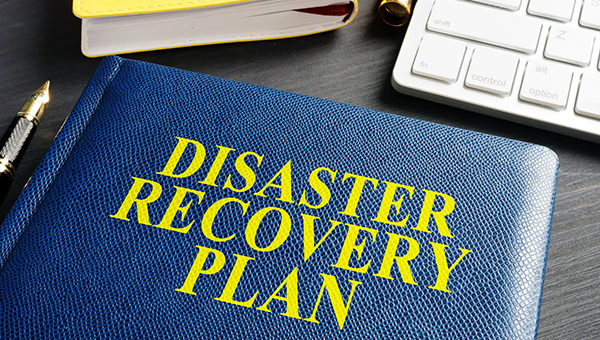By the Time You Ask if You Need a Server, It Might Be Too Late
Invision provides IT tech support for businesses across the Kansas City metro. And, right now, it’s spring, which in the Midwest means storm and tornado season. Flooding, tornadoes and other acts of God or otherwise can bring a business to its knees.
Having a thorough IT disaster recovery plan to help ensure business continuity after a disruption is one of the first things an outsourced IT tech support company suggests to any business owner.
Why?
It’s human nature to believe your business will never experience a disaster, but disasters, like power failures, IT system crashes and natural disasters do strike. And when they do, there’s a high risk that your business may never recover. In the event of a disaster, your most critical and valuable data can be restored from a server backup so you can get back to business as usual.
You Know to Backup, but Do You Know Where?
Most every business owner our IT tech support team talks to knows how important it is to backup their data, whether it’s part of a disaster recovery plan or not. Not everyone understands where the data that’s backed up should live. Without a doubt, the answer is offsite.
Saving critical data on an offsite server means it’s away from the disaster or power outage. Saving it onsite opens it to the same problems the rest of your business location could experience. Consider having an additional backup site in the event that some or all of the data in one of the backups is corrupt or missing.
Do your employees know where to save their files and data? More importantly, do they actually save information in the right place or at all and on a daily basis? For example, what if your key salesperson kept contracts and customer contact information on the desktop instead of the server? That desktop goes down, the data goes down with it. Same theory applies to web applications and login information, such as accounting and payroll services or non-web-based software license keys.
READ: Tech Support Guide to Unlimited Cloud Backup
You Know the Answer to “Do I Need a Server?” but Do You Know How to Start
Start by listing what is required to get your business back up from hour one. That’s the beginning of the checklist of data you need to ensure you backup on a server. Your checklist is important because our brains do not function normally under stress, especially stress caused by a catastrophic event. Also, your checklist is a good snapshot of what your company looks like today, so you can recreate it if necessary.
Here are some questions to answer while creating your checklist:
- What has to be back up and running within hours?
- What has to be restored within 24 hours?
- What can remain down beyond the first few days?
With your data prioritized, you can schedule your backups hourly, daily, weekly accordingly.
READ: Could a Hacker Take Down Your Business?
Other questions to consider regarding coming back from disaster recovery are:
- Can you access your system and data remotely in case you can’t work onsite?
- How will you contact and establish ongoing communication with employees?
- Is it worth investing in a generator to keep electronics running?
- Do you have an inventory of every component of your network and its location?
- Do you have a snapshot of your system and all the applications, including configuration, running on it?
- Would you need a backup internet service provider?
Your business is more likely to experience a power outage—an inconvenience more so than a tragedy. Yet, if you’ve ever dealt with not being able to access your data, then you know the consequences to your business and operations. If not and if you have a business computer network server, hopefully you can avoid those issues.




